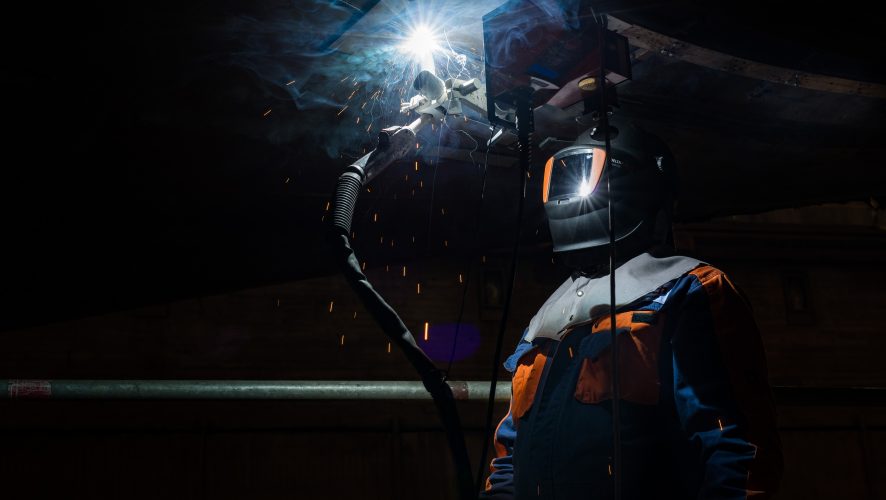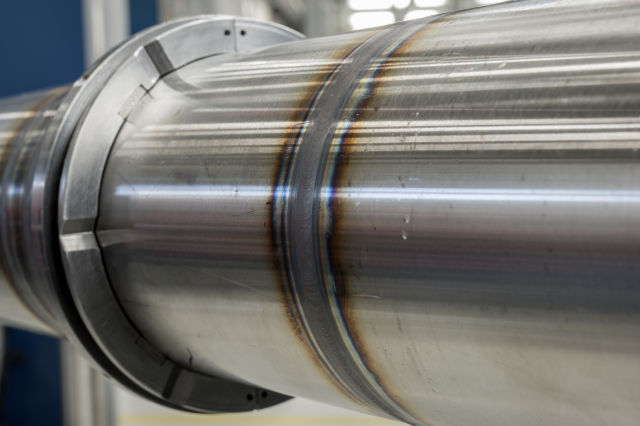In the world of welding, innovation is guided by the needs of both the industries using welding systems, and the individual welders who work with them from day to day. To draw a picture of the future of welding, we asked two welders to give us their insights on the road ahead.
Hanna Bechtel, metal worker in training from Sälzer GmbH in Marburg, Germany, works on substructures and steel frames for doors, windows and facades. Hanna predicts that TIG welding will be the most common technique, but others will continue to be used as well. However, robotization might change the content of the work and replace the human touch in many situations.
“Every technique has its own range of applications and advantages, so I wouldn’t say any of them will be completely abandoned. But I think that in the future, there will be tools for which you only have to set the material and thickness and the machine makes all further adjustments on its own. I would not like to see robots replacing welders – a passionate like me would rather do the job herself than let a machine do it for me,” Hanna says.
Welder Juho Nissinen, from Leppävirta, Finland, believes that the work content of the welders of the future may include programming of machines and call for development of IT skills. However, the young professional, who will represent Finland in the WorldSkills competition in Abu Dhabi in October 2017, thinks that welding by hand will not be fully replaced.
“Stick welding may be less popular in the future, but it will not be given up entirely. There will continue to be situations in which manual welding is the only way of getting the job done.”
Mechanized welding improves speed and quality
Juho sees mechanized welding as the biggest trend of the future, and expects to see strong development in the area.
“Mechanized welding increases speed and creates more even quality. It is already possible to record and duplicate the welding parameters and manipulate the arc – welding machines are not that far from computers even now,” Juho says. “I think we will see new techniques that produce spatter-free welds, allowing for faster finishing.”
Hanna agrees that digitalization and mechanized welding make sense when absolutely clean welds are needed for products that are under extreme pressure, such as gas tanks. She foresees future needs for welding in the construction of pipelines, containers, bridges and offshore oil platforms in particular – all applications requiring uncompromising quality.
“By robotization, welding will change in a direction in which welds are less resistant to pressure, vibration, tension and agitation. The joints will most likely be single-layered,” she says.
Safety first, now and tomorrow
The safety of welders is naturally a key factor in the day-to-day work. New safety innovations are developed alongside the welding equipment to ensure that welders can work in as hazard-free conditions as possible. Hanna expects to see further improvements to safety gear in the future.
“Concerning safety, techniques should be developed so that e.g. in MAG welding no beads or sparks can develop. Work wear could be more comfortable and lighter. By these measures, accidents at work can be reduced and some even avoided.”













Interesting article. I was wondering about future weld inspections (critical applications). Today ultrasound and radiography are the most common inspection methods. Does the welding method influence the inspection technology need? What can inspection technology providers do to simplify and speed up the inspection? Is there a need for 3D imaging on girth welds – compared to 2D?
It would be really nice to have better speed and quality when it comes to welding. If mechanized welding can improve on that then I am sure we would want to use something like that. Maybe an automatic girth welder could be quite useful as well.
I would like to thank you for attempts to write this article. Thank you for sharing informational suggestions.
Nice post shared here and is very informative. Welding is a fabrication or sculptural process that joins materials, usually metals or thermoplastics, by using high heat to melt the parts together and allowing them to cool causing fusion. Welding is distinct from lower temperature metal-joining techniques such as brazing and soldering, which do not melt the base metal.
As for robot integrator and industrial welder the future stays bright for long years and you can earn thousands of bucks too by daily working as a welder as there are lots of work available for professional welder all you have to need is good skills and practice further to make your career bright as a welder.
Highly informative and well predictive post
i think you have rightly highlighted all the basic points. As far as innovation is concerned, i think quality and speed will be the most promising choice in this regard. there will be a lot of improvement in these things in the future. i hope so.
I think you predicted it right, yes Mechanized welding is going to be the future, but the question remains, whether it improves the speed and quality in the way we welders are looking forward to it. And seconds what wonders it can perform to make the welding spatter free.